Even though knowledge management (KM) is all the rage these days, you still might be on the fence about implementing something as extensive into your everyday business life.
In this post, we’ll explain what you will get out of KM and why investing in such a significant change pays off. Since your company goals probably include easy decision-making, cost savings, better communication, and growth, you should stay tuned in.
Let’s dive right into the benefits of knowledge management!
Decision-Making Has Never Been Easier
Knowledge management makes you more secure in what you know, thus allowing you to make decisions confidently.
Firstly, when you invest in a good internal knowledge base and compile company insights and those of experienced employees, you’ll always have access to them.
Just think about it: instead of going around the office collecting insights and knowledge to finish a task, you and your team can simply log into the database and explore its articles to find what you need.
The best part is that quality knowledge management systems have advanced organizational features, meaning any piece of information you need is just a couple of clicks away.

Source: Archbee
Therefore, it will be easier to make informed decisions when you have all that knowledge in one place.
Philips’s global head of knowledge management, Hans Visschers, claims that “you need to have the knowledge at the place where you need it at the moment in the right format”.
The company used this as a guiding principle when they started to add all their knowledge to an internal KM system.
Nowadays, their engineers save hours daily because the information is readily available.
An empirical study confirmed this, stating that “the quality of decision-making mediates the relationship between knowledge management and firm performance.”
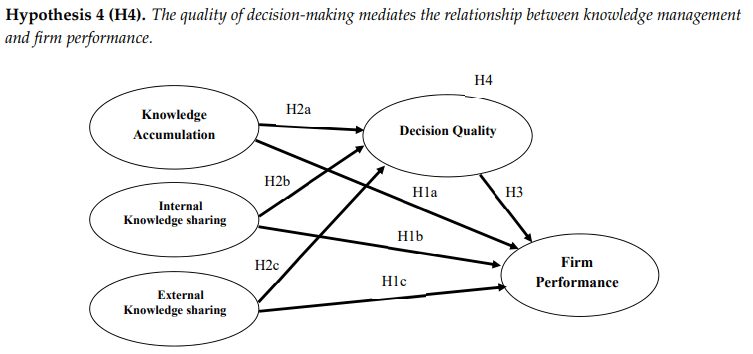
Source: MDPI
In other words, good work performance depends on the quality of your decisions.
And you can only make quality decisions if you have unrestricted access to the total sum of knowledge and expertise in your company.
But, knowledge is not all your team will get from KM.
Employees who join your company will be able to catch up to their peers faster and become independent workers, which will make them feel empowered and more confident in their daily duties.
After all, whenever they have a question, they can turn to the database for answers, which means they can quickly continue their work.
Research shows that allowing employees easy access to work-related insights makes them more engaged and productive.
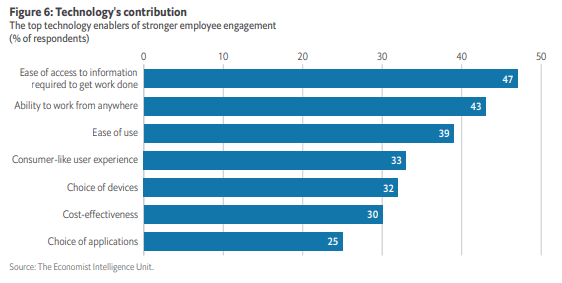
Source: The Economist
On top of that, an organized database containing all your company knowledge will be filled with tried and true methods that simply work.
Otherwise, these processes wouldn’t make it to your knowledge base. So, the employees will have guidance that will help them avoid hesitation when making decisions.
Customer Delivery Is Significantly Better
Delivering outstanding results and service to your customers should be the primary goal for every business. A sound KM system will be of great help in achieving it.
After receiving a question from a customer, an employee should be able to look up the answer in your internal database.
They should be able to enter a keyword into a search engine and immediately get at least a couple of relevant results.
Example of a search functionality in Archbee:

Source: Archbee.com
Such easy access to data that helps someone do their job significantly improves their performance, which allows your customers to get their solution faster.
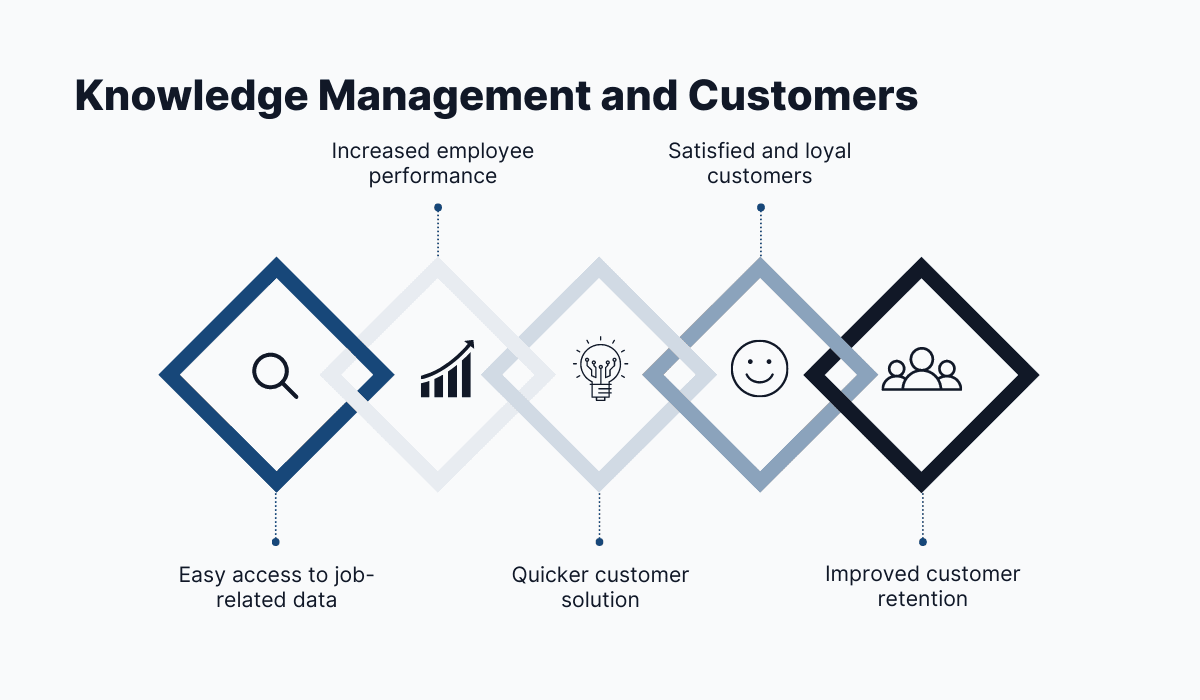
Source: Archbee.com
This result, in turn, makes them more satisfied and loyal to your brand.
Finally, customer satisfaction leads to customer retention, meaning you get more profit from the same users without any significant investment.
After all, quick and easy solutions are what customers appreciate, which you will see in many product reviews around the internet. Like this one:

Source: ProductHunt
The key to this process is having a centralized source of information your entire team can use.
The UK corporation Tesco understood the necessity of knowledge management because of its 460,000 employees in nine countries.
The company's goal was to gather all their knowledge and help almost half a million employees use it to help customers faster and better.
Nowadays, after digitizing their knowledge and sharing it with employees, 79% of Tesco’s customer support tickets get resolved in one touch, without escalating the ticket.
In other words, employees have access to knowledge that allows them to help customers instantly.

Source: Zendesk
Finally, if you’re one of the companies that want to share parts of their knowledge base with end customers, you’ll see drastic improvements in their satisfaction and help them get the most out of your product.
Therefore, you’ll have happier and more loyal customers.
With software like Archbee, it’s easier to select which pages and documents you want to share with outside users, thus letting your customers find what they’re looking for on their own.
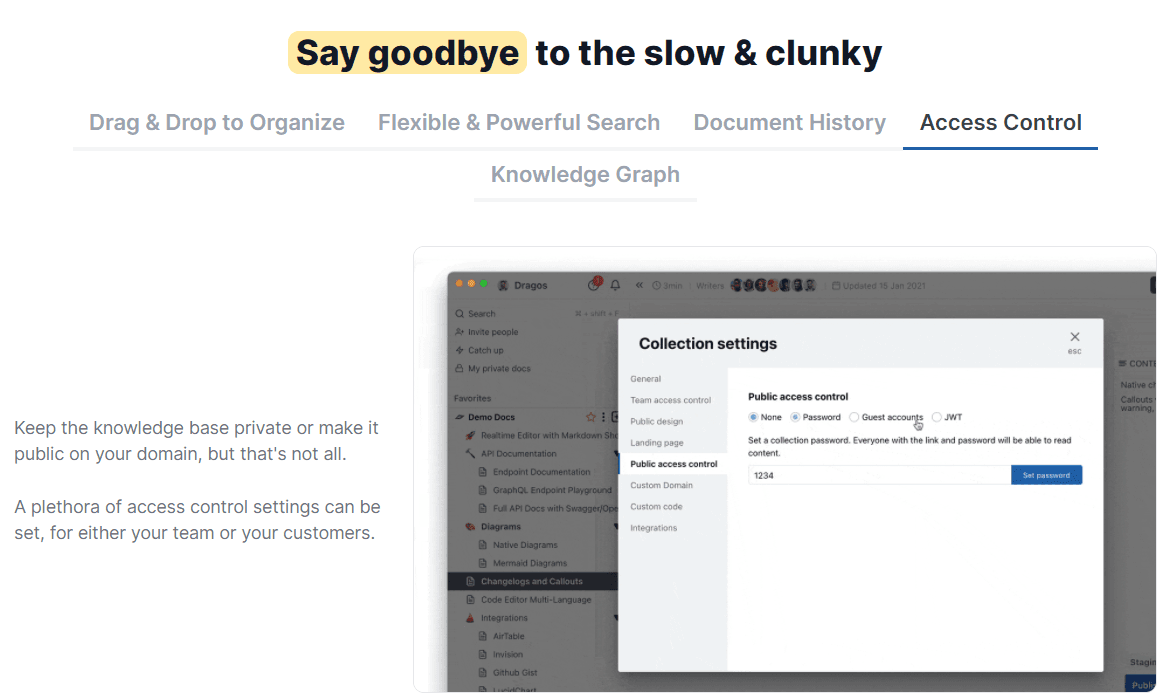
Source: Archbee.com
A great example of a global company that does this is Siemens.
The tech giant shares its database with customers, thus allowing them to troubleshoot issues and find answers in seconds.

Source: Siemens
The database is divided into topics, allowing users to search within those topics to get instructions. Siemens lets users ask questions and read official knowledge base articles.
Employees have their accounts in the database, which means they can make posts or answer questions.
Therefore, the collaboration between employees and users is used for maximum knowledge transfer, resulting in customer satisfaction.
Effortless Organizational Communication for Everyone
Good knowledge management will take organizational communication to the next level.
This type of communication is something many companies struggle with, so some important news never reaches every corner of the company.
Some workers get updates, others don’t, and you risk someone following outdated practices.
With good communication through KM, you avoid misinformation and ensure everyone gets updates in real-time.
With a good KM in place, employees are more likely to stop hoarding knowledge. If they see others share what they know, they’ll be prompted to do the same.
Knowledge hoarding, or the situation where only one person knows a particular procedure or other important information in detail, leaving others to depend on them, is pretty standard but detrimental to companies.
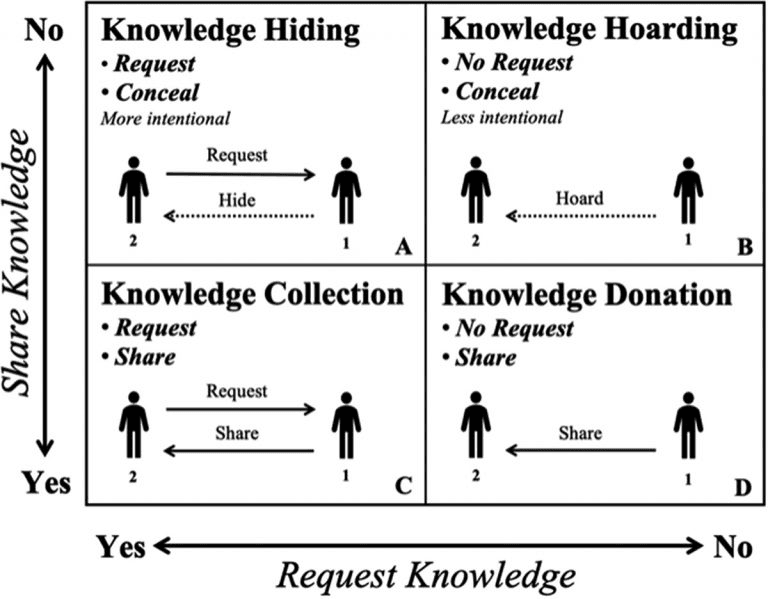
Source: RealKM
To avoid the two negative behaviors regarding knowledge—hoarding and hiding—encourage employees to contribute to your shared knowledge base and participate in your knowledge-sharing culture.
On top of that, a detailed knowledge base allows your team to log in and get answers whenever they need them, instead of calling or emailing someone.
Solutions are readily available.
If they’re not, the employee should be able to ask a question and the question should be visible to anyone else using the internal database.
That way, problems get solved ASAP, and productivity soars.
Xerox, a digital printing solutions company, had a communication issue in the mid-90s.
Because field employees and other teams didn’t share insights with each other, it would take a while for field employees to find solutions and fix their printing machines.
As a result, the company dealt with lost time, money and frustrated customers.
Soon they realized something had to change, so they created Eureka.
This central knowledge management platform allowed Xerox’s field employees to share their knowledge and tips with everyone in the company.
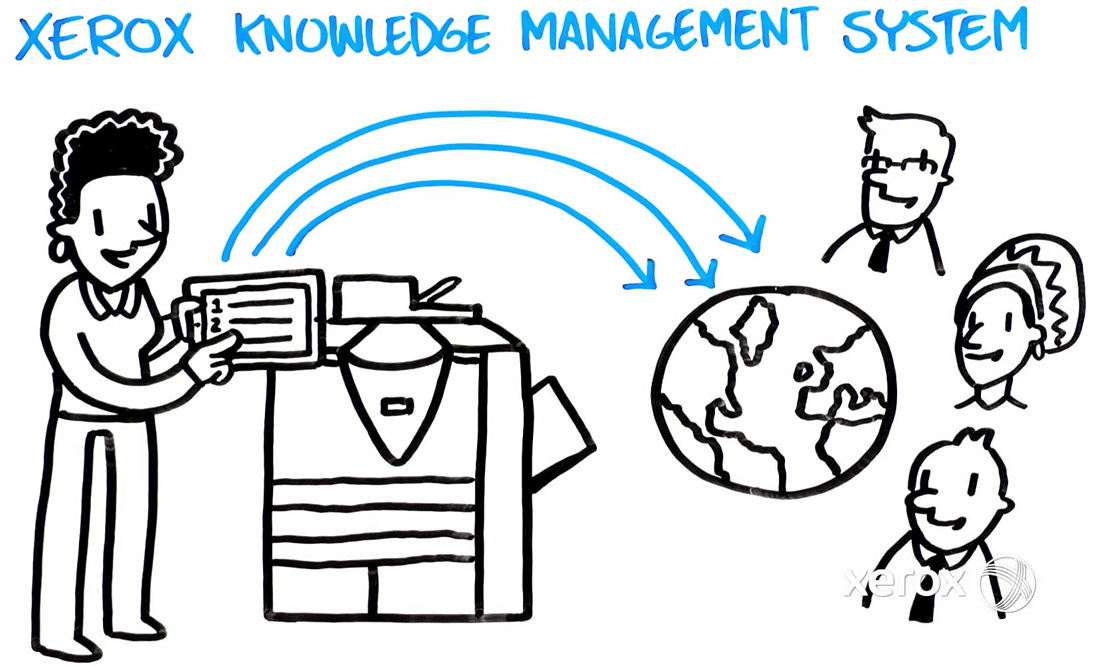
Source: Xerox Support on Youtube
With it, an employee who found a machine with an unfamiliar issue was able to look up the problem in Eureka and find a solution offered by someone from another state.
More effective KM has saved $100 million for the company.
Do you think it could do the same for you?
Training Costs Are Notably Reduced
It’s no secret that the quality of your training can make or break your company, just like it’s no secret that a good KM can help you improve and save money on training.
Without good training, your team won’t know what to do.
Those who find solutions for everyday problems and figure out the processes themselves will approach matters using different methods.
This will lead to inconsistent results, which will have negative effects on the company.
However, training is expensive.
The average small company in the US spends over $500,000 on training, while large companies spend up to almost $22 million.

Source: Training Mag
At the same time, Michael Beer, a Harvard Business School Professor of Business Administration, claims that only 10% of corporate training is effective.
Therefore, training is often overpriced and ineffective.
Nevertheless, there are ways around these issues.
A detailed and accurate knowledge base will help your training program immensely.
Firstly, you’ll save money.
You won’t have to regularly organize in-person training sessions if you give your employees all the answers in an internal database.
Because of this, you must use a knowledge base software that lets users easily search for content.
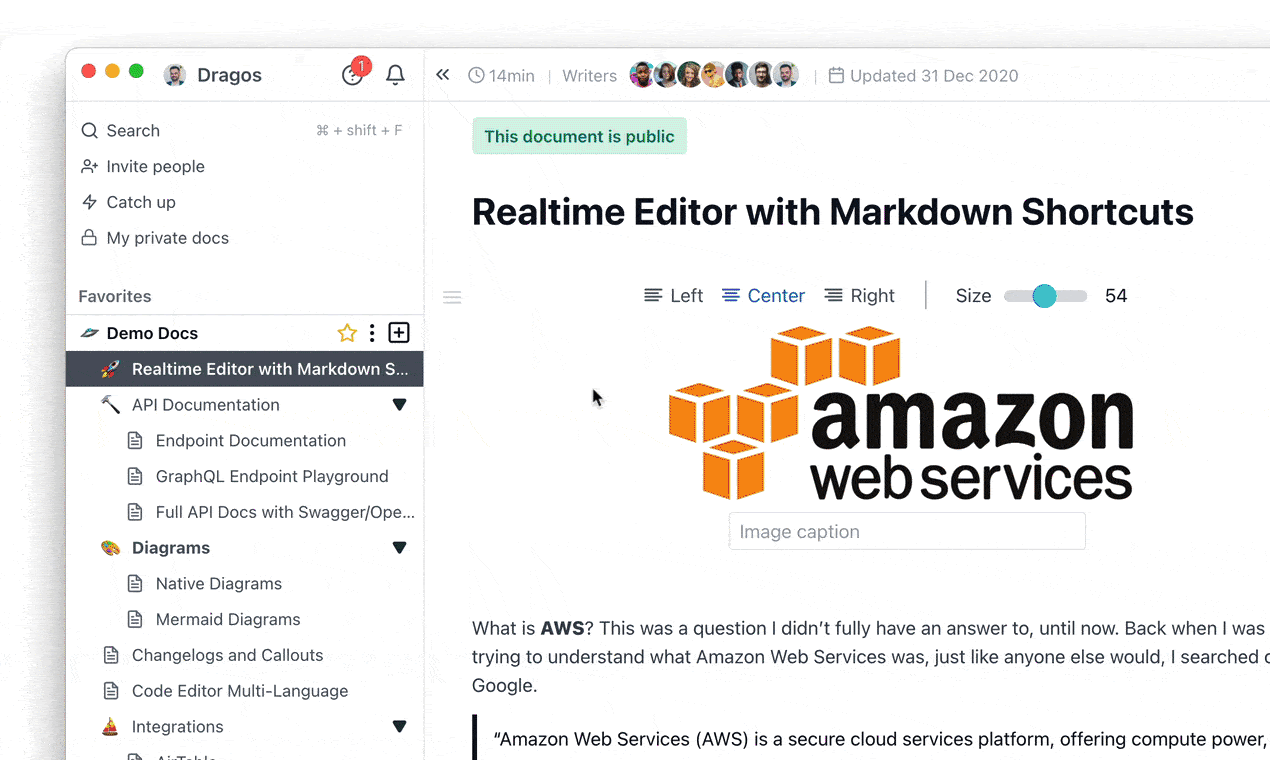
Source: Archbee.com
Through Archbee, you can find the content you’re looking for using the search bar.
The admins will also be able to track the keywords people enter and examine their frequency.
Therefore, if you notice people frequently researching something, you’ll be able to write articles that answer their questions or add more information.

Source: Archbee.com
In addition to articles, you can create training or onboarding videos and embed them in your database, allowing employees to learn when they want, and revisit lessons until they are secure in their knowledge.
On top of that, you can ask employees to participate in this knowledge-sharing and offer their insights.
According to Mark Britz, the author of Social by Design, companies are currently hyper-focused on moving training online and creating more and more content, which is just one-half of the formula for good knowledge management.
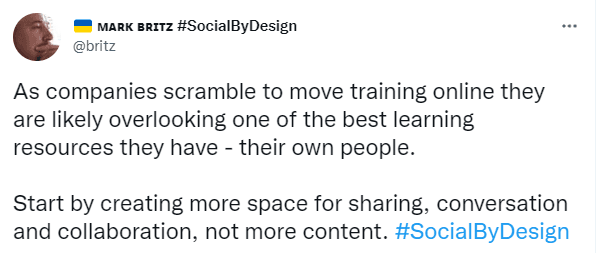
Source: Twitter
To really unlock fast learning, companies should encourage people to collaborate and share if they want to tap into their knowledge and improve training.
Furthermore, when you have a knowledge base to document your processes and training, it’s easier to learn from your mistakes and continue improving.
Nick Milton, the director and co-founder of Knoco Ltd, a KM Consultancy, says you should ask yourself:
“How much would you have saved, if you had known what you know now in advance?”
In Milton’s words, “the answer to this question represents the cost of no knowledge.”
Once you determine that cost for your company, you’ll understand how much your company benefits from capturing and using knowledge.
Therefore, you’ll also know how much a knowledge management system will save your company.
Standardized Processes Are Much Appreciated
A company without uniformity can’t and won’t be consistent in its results and quality.
It just can’t happen, not when decision-making without a centralized data source depends on the person making it.
Hans Visschers said this is precisely what was happening at Philips.
The company realized two managers from different countries worked on the same thing and presented different results. Therefore, both employees wasted time on the tasks.
Visschers explains that Philips wanted to ensure their employees worked together on a challenge, shared their knowledge, and avoided reinventing the wheel every time.
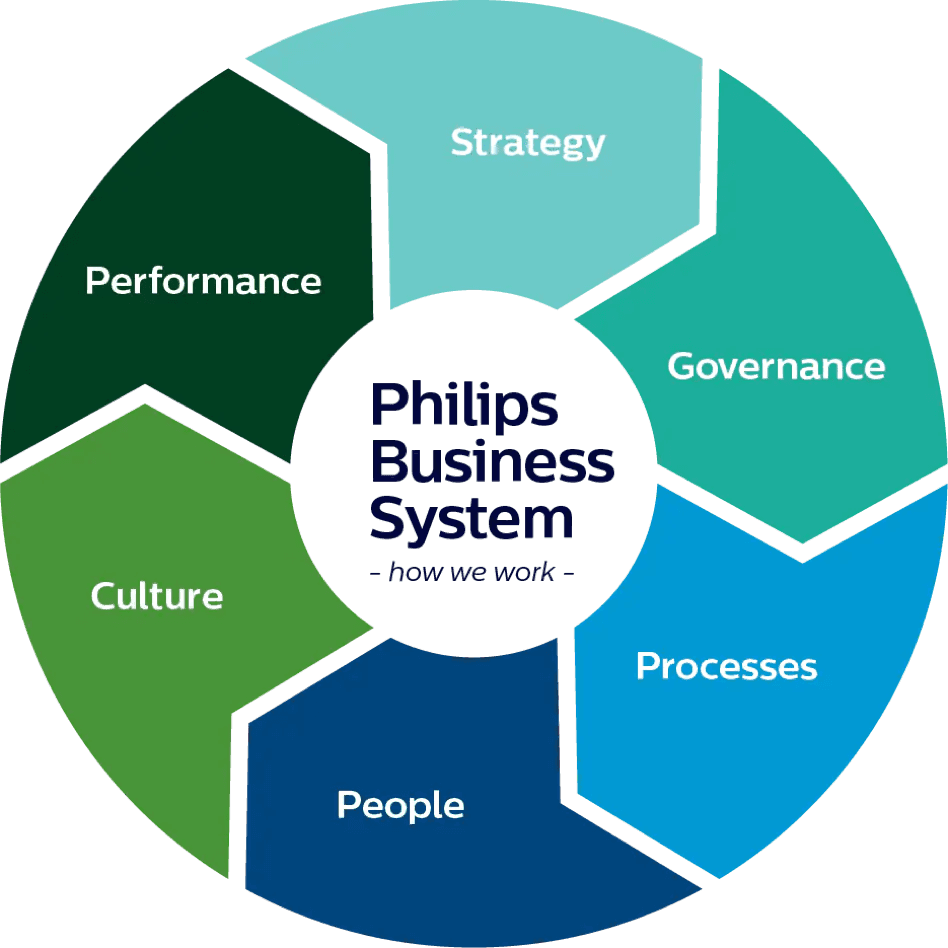
Source: Philips
Because of this, the company realized it had to standardize its processes by introducing an internal knowledge base and encouraging knowledge sharing.
Nowadays, they have a single standard operating model, the Philips Business System, to ensure uniformity.
Cross-company standardization will also help you get the same results, regardless of who’s working on the task.
When you have one source of information, it’s pretty easy to update it and inform everyone of the change.
Therefore, when you find a better way of doing things, you can update your internal knowledge base, and rest assured that everyone will use the new method.
Knowledge management can also help you reverse the forgetting curve.
If you’ve heard of the learning curve, this is the exact opposite. It refers to the fact that people will forget what they learned unless they revise and practice it.
Experiments and research have proven time and again that knowledge only sticks if it’s used and revised frequently.
In other words, knowledge management is necessary to avoid the forgetting curve.
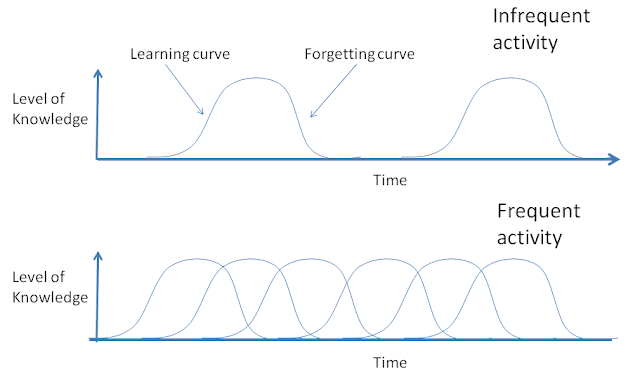
Source: Knoco
Work procedures that constitute everyday activities in your company are unlikely to be forgotten and lost.
However, some standard processes don’t occur as often, meaning you need to take action to ensure these processes aren’t lost.
The best practice for avoiding the forgetting curve would be to write down the knowledge that your team doesn’t use daily and is therefore at risk of forgetting.
You should fill your knowledge base with information your team will likely let slip.
Growth and Innovation Are Long-Lasting
With a great KM system in place, it will be easier for your team and company to grow and improve.
When you encourage a culture of knowledge sharing and ask everyone to participate, you’ll be swarmed with new ideas and insights.
After all, you don’t have all the answers or knowledge, nor do any of your employees.
However, when you all collaborate and brainstorm, you will keep coming up with innovative, better ways of doing things.
Mark Britz, the author of Social by Design whom we’ve quoted earlier, believes collaboration sparks innovation and helps you develop employees.
Of course, the more effort you put into your employees and their progress, the more productive your team will be.
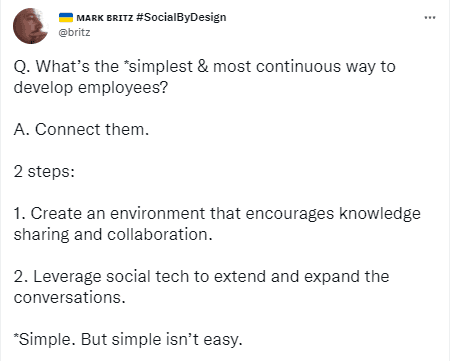
Source: Twitter
Britz claims that the simplest way to do this is to create an environment where people feel free to share insights and collaborate, i.e., create a knowledge-sharing culture and use social technology to encourage communication.
Workers who know where to find information when necessary will save themselves a lot of time, thus increasing productivity. McKinsey found that technologies which allow knowledge-sharing boost productivity by up to 50%.
John Milinovich, CEO and Co-Founder of Aesthetic, realized the growth potential of information sharing when he started his first company URX at 25.
His company got a $15 million investment from Silicon Valley’s top investors and was acquired by Pinterest in 2016.
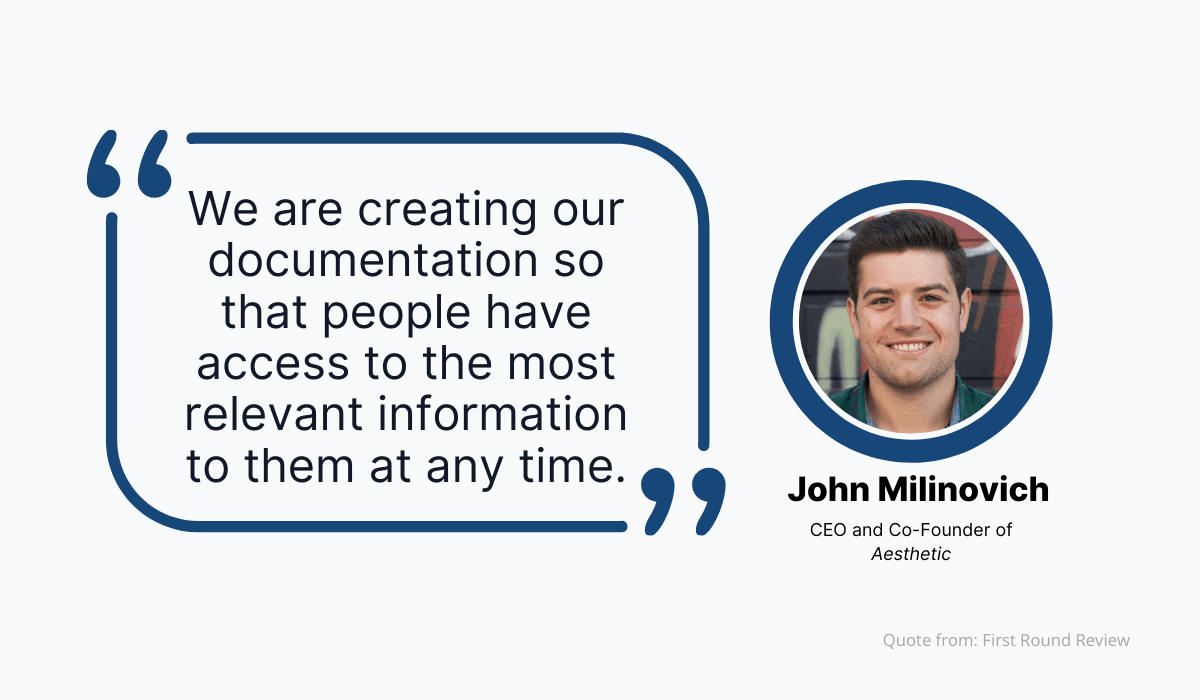
Source: Archbee.com
How did Milinovich achieve this?
He believes that businesses have to self-improve constantly, including giving feedback, having one-on-ones, and keeping good internal documentation.
Because of this, URX created their company wiki on GitHub, where they shared insights with employees and asked them to contribute.
According to Milinovich, when you invest in these things, “growth and constant improvement are possible at the same time.”
So, think about investing in your internal documentation if you’re looking to increase growth and innovation.
Conclusion
Knowledge management seems to be the key to many things, including company development, knowledge-sharing, and an informed workforce.
All of these things benefit your company directly and indirectly.
The article has given you examples of companies and experts who have used KM to their advantage and turned their companies into lucrative businesses.
You can do the same if you invest in a good knowledge base and manage your insights and ideas, ensuring that everyone stays in the loop and contributes to company ideas.
Frequently Asked Questions
By putting everything you need to decide—facts, context, and precedent—in one trustworthy place.
- Single source of truth: A searchable, structured hub reduces time spent hunting for answers and increases confidence in the information you use.
- Decision context: Decision logs, rationales, and past outcomes help you avoid repeat mistakes and choose proven paths.
- Always current: Tagging, version control, and clear ownership ensure guidance is up to date and authoritative.
- Expert access: Owners, subject-matter experts, and comments/Q&A make it easy to clarify nuances on the spot.
- Consistent criteria: Templates and playbooks standardize how decisions are made across teams and geographies.
- Data-aware: Search and usage analytics highlight gaps, so you can improve content that informs decisions.
Net effect: less guesswork, faster choices, and more consistent, higher-quality outcomes across the organization.
